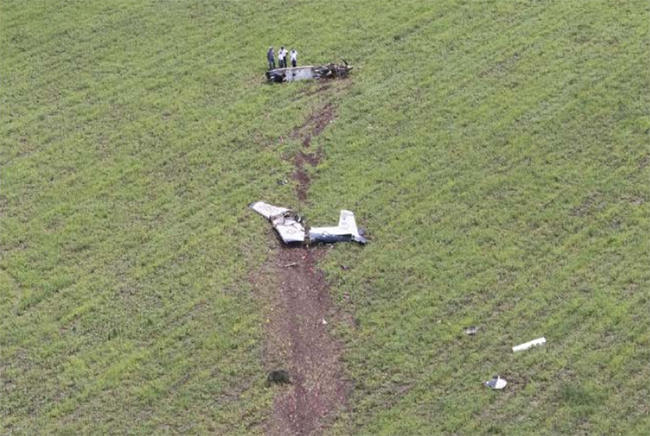
A T-6 Texan II from the 559th Flying Training Squadron at JBSA-Randolph, Texas, crashed into a nearby field Sept. 18, 2018, after a part was improperly installed on the aircraft's engine. The pilots were able to safely eject, but the aircraft was destroyed. Photo from Air Force Accident Investigation Board report.
An engine part installed improperly during contract maintenance caused a T-6 Texan II to crash in September, Air Education and Training Command said in a recently released investigation.
The instructor pilot and student pilot from the 559th Flying Training Squadron at JBSA-Randolph, Texas, were able to safely eject from the T-6 before it crashed about five miles northwest of the base, destroying the plane at a loss of $5.7 million, according to the AETC report.
On Sept. 18, 2018, the T-6 and its pilots were flying an instructor qualification sortie when they returned to base for local take-off and landing practice. At about 3:35 p.m. as they approached the base, the aircrew noticed a high fuel flow reading and decided to continue the approach to a full stop.
About four minutes later, while slowing to land, the aircraft’s engine failed. The plane was flying too slow to glide to a suitable landing surface, prompting the aircrew to eject. They radioed, “Fangs 99, ejecting on short final,” then turned the aircraft slightly to the left toward a field and away from a school that was directly ahead before punching out.
The aircraft crashed in a flat, lightly corrugated field. The aircrew sustained minor injuries.
The Accident Investigation Board found that fuel nozzle transfer tubes in the engine were out of position, because of an improperly installed transfer tube locking plate. This caused fuel to leak out of the system before being injected into the engine, so the engine itself did not have enough fuel to sustain normal operation.
Evidence showed that the engine arrived from contractor Standard Aero Ltd. in December 2017 after its 4,500-hour scheduled overhaul with the locking plate installed incorrectly. It was installed onto the aircraft in August 2018 and the aircraft flew regularly without problems before the crash.
